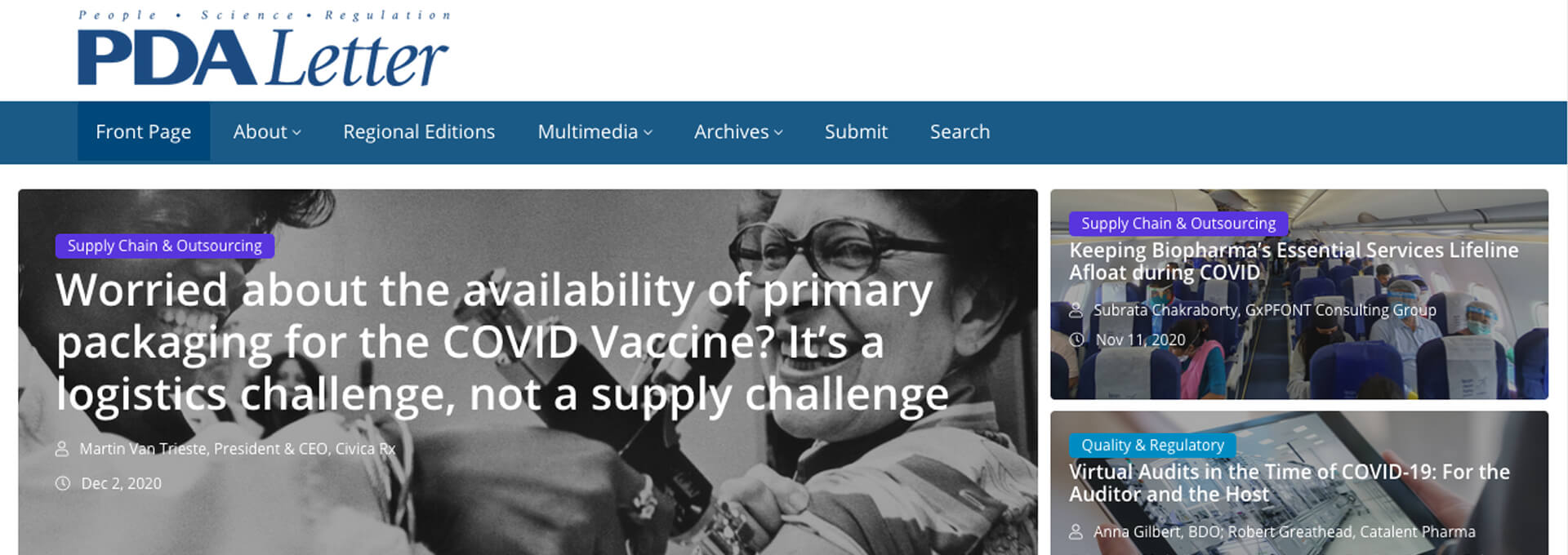Publishing by the Numbers: An End of an Era

Electronic publishing provides readers, authors, and publishers many benefits. By now, the benefits to readers have been exhaustively discussed and analyzed: access anywhere, search, etc. But what are the benefits to authors and publishers?
Well, for authors, there is time to press. In traditional publishing, the time between initial submission to final publication can be over six months for a magazine and a year or more for a scientific journal. But for e-publications, the time is significantly reduced. Articles in the electronic PDA Letter can be processed and published in a matter of weeks. Feature-length articles take the longest, as they are distributed to the PDA Letter Editorial Committee for comment, but those that get green-lighted on the first pass can publish in four weeks.
The benefits of e-publishing to the publisher are many. Besides providing a better product to readers and making authors happier with faster publication times, e-publishing allows publishers to dig into the analytics to fully understand what readers want. This information also is used to help inform PDA’s other activities, as the PDA Letter staff let’s the other departments know what is hot and what is not. This data also is useful for our sponsors and advertisers.
Not only do the analytics help with editorial decisions, it assists in helping us choose the best papers published each year (papers-of-the-year have been recognized by JPST for several decades and by the PDA Letter since 2020). To be clear, the analytics are not the only factor in choosing these papers, but they are definitely one of the factors. There are many reasons why analytics alone are not the sole factor, such as length of time a paper is available during the year. The top five articles published this year by readership are:
- “Regulator Develops Remote Inspection Process Due to Pandemic,” by Shestakoy (Russian Regulator) and Meyers (Amgen), published June 9
- “Visual Inspection Practices of Cleaned Equipment,” Parts 1 and II, by El Azab (Steris) and Cousin (GSK), published April 14
- “Industry Must Move Away from Dye Ingress Testing,” by O. Stauffer (PTI), published June 30.
- “Data Integrity: The New World of Virtual Audits and Investigations,” by Henrici (THG) and Cahilly (Green Mtn. QA), published August 6
- “Virtual Audits in the Time of COVID for the Auditor and the Host,” Gilbert (BDO), et al., published October 28
You can see from the titles that the pandemic is on the mind of our members. Much has already changed, and much more will change because of it. Because of it, PDA restricted the print editions of the PDA Letter to just its North American members. And in anticipation of continued work from home orders, limited attendance at PDA’s conferences and events, and constrained resources in 2021, we are eliminating the print edition altogether next year. For 56 years, the Letter was sent by mail to all PDA members, a really impressive run!
So, yes, you are holding onto what might turn out to be the very last printed edition of the PDA Letter (there is a chance we resume printing in 2022 or at a time when the world returns to normal). I for one will have a copy framed. What you do with yours is up to you, but I hope you keep it.
The PDA Letter is thriving as an electronic publication, and we look forward to 56 and more years of publishing online!


